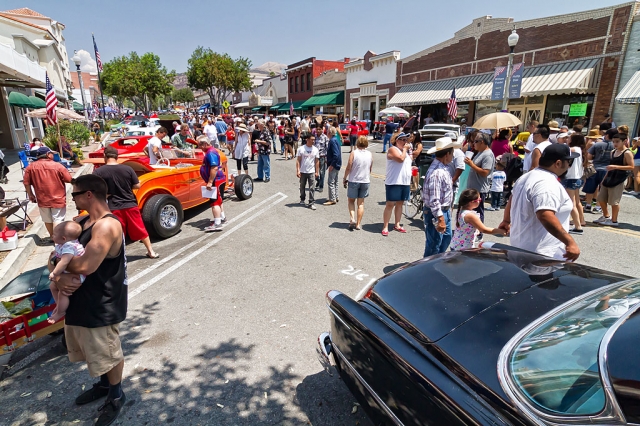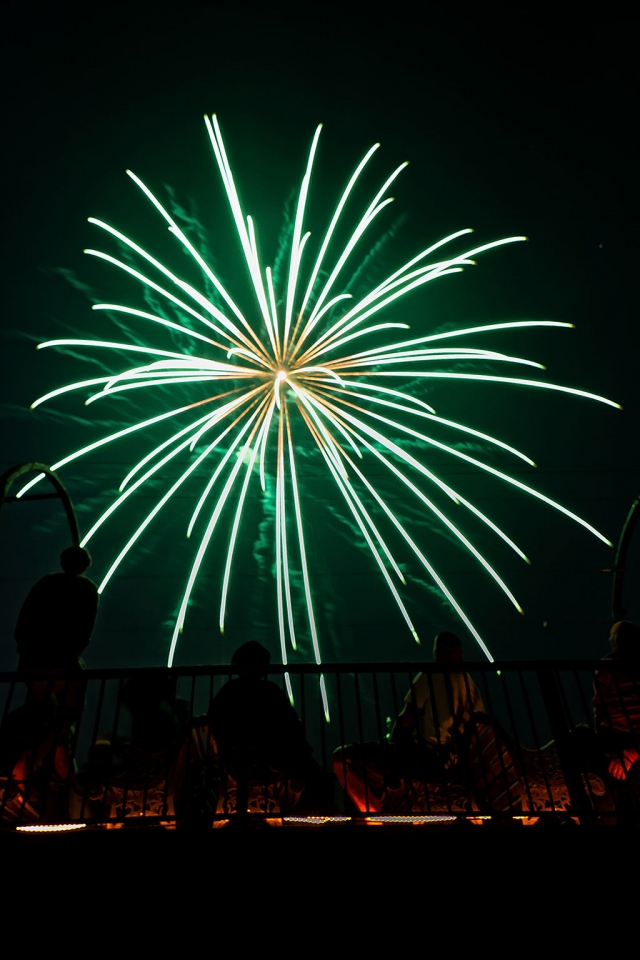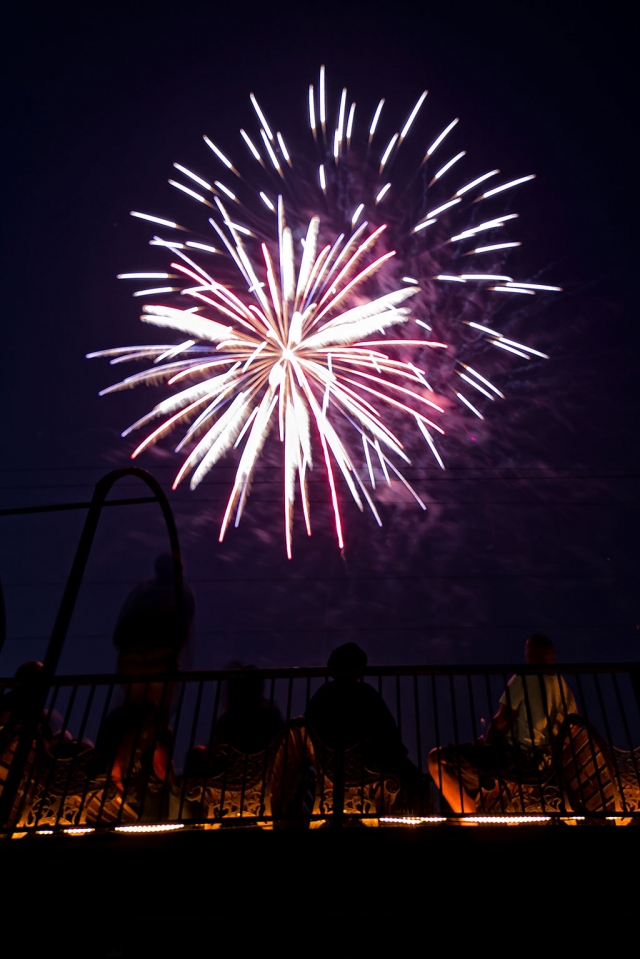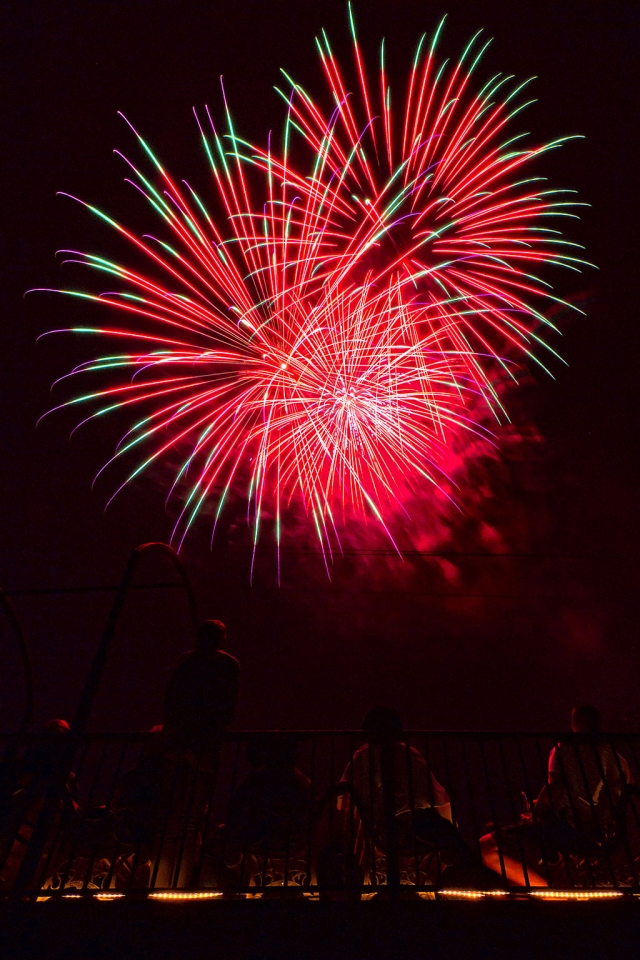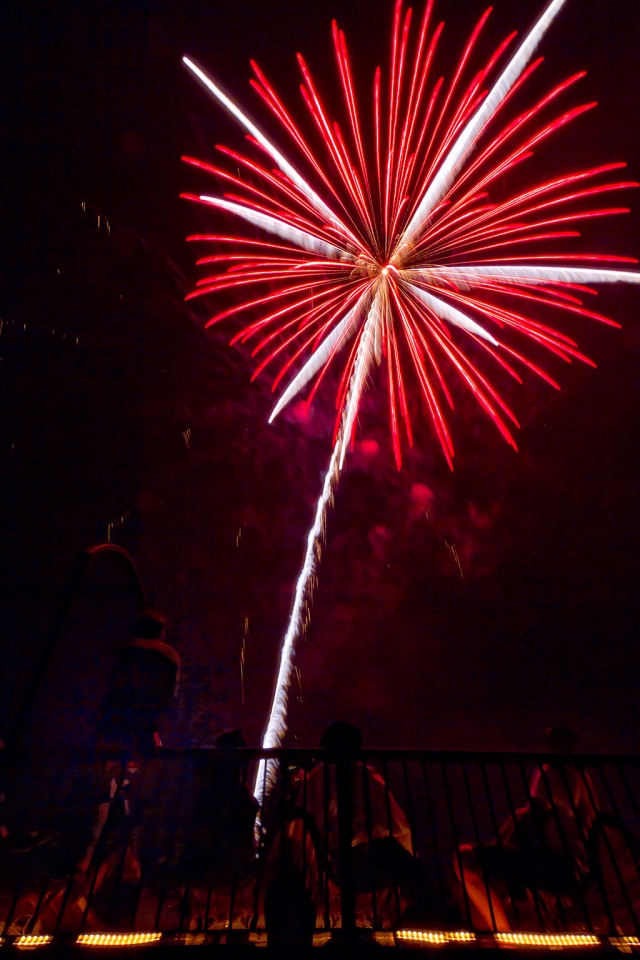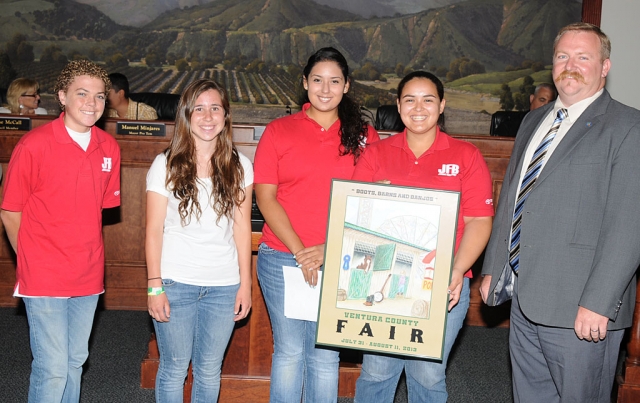|
By Dick Diaz — Wednesday, July 17th, 2013
There are many “Only in Fillmore” and “Hometown boy makes good” stories to recount, but the one about Fillmore's own Rigo Landeros deserves mention in both those categories! If I didn't live in Fillmore and personally know Rigo for over 20 years I would be suspicious myself that in today's environment anyone would be asked to do what he was asked to do; or that he could accomplish what he did these past 11 months as interim city manager. But to really understand how this happened, and how it actually worked, you really have to know a little background about Rigo, Fillmore’s Fire Chief. Except for being born in Ventura, Reguberto “Rigo” Landeros, 49 years old has lived all his life in his hometown of Fillmore. He has been educated in Fillmore Unified School District Schools; San Cayetano and Sespe Elementary Schools, Fillmore Junior High School (now Fillmore Middle School) and he graduated from Fillmore High School in 1982. Rigo is the son of Nicholas and the late (2001) Gabriela Landeros of Fillmore. Rigo's father was a hard working family man who toiled in the orange orchards until age 70 as a laborer. Rigo is the youngest of six Landeros children; Brothers Nick 59 years of Ventura, Frannie, 56 years of Fillmore, Chris, 54 years of Fillmore and sisters Abbagail, 58 years of Pearblossom, CA, Annaberta, 52 years of Fort Wayne, Indiana and Josie, 51 years of Lancaster, CA. His father-In-Law Tom and mother-In-Law Jan Petersen also live in Fillmore. Rigo is married to CONTINUED » |
|
By Anonymous — Wednesday, July 17th, 2013
 On Tuesday, July 16 at around 5:02 p.m. a traffic collision occured at the intersection of Highway 126 and C Street. Westbound traffic was diverted through an ally. Enlarge Photo |
|
By Anonymous — Wednesday, July 17th, 2013
A bear was spotted in the 1600 block of Grand Avenue, Fillmore, Wednesday morning at 9:45 a.m. The Wardens landed several bean bags on its derriere, and it headed home. Bears occasionally come down the area canyons in search of water and avocados. |
|
By Bob Crum — Wednesday, July 17th, 2013
Story & photos by Bob Crum
If it didn't wear a number ID, it could be easily mistaken for an errant drone. With a 9-foot wingspan... the majestic condor #11 lazily soared in the thermal updraft high up on Hopper Mountain. It circled overhead for approximately five minutes... watching the people below. While it's reported that condors are extremely inquisitive... this big bird didn't fool me: it was showing off! Everybody with a camera took full advantage of the condor's exhibitionism. What a hoot... so to speak. According to the National Wildlife Service , California Condors can soar on warm thermal updrafts for hours, reaching speeds of more than 55 miles per hour and altitudes of 15,000 feet. Through telemetry... flights up to 150 miles in a day have been recorded. Condors hold their wings in a horizontal position and fly very steadily, unlike turkey vultures which fly with their wings held in a V-shape and appear to be unsteady or “wobbly.” Turkey vultures and golden eagles are the birds most often confused with condors. A condor has large white stripes on the underside of its wings, whereas the golden eagle and turkey vulture have white on the wingtips rather than a thick white stripe. This was my second trip to the condor sanctuary within the Hopper Mountain National Wildlife Refuge six miles north of Fillmore. I was privileged to join the Friends of California Condors and personnel from the National Wildlife Service for a special occasion: A cave (nest) entry by USFWS biologist Joseph Brandt and Chandra David of the Los Angeles Zoo. Time for a health checkup of a chick born earlier this spring so Brandt and David rappelled down to the nesting cave in the mountain side. With the chick in hand... the biologist draws a blood sample from the young bird to be sent to a lab for analysis. After a routine checkup... the chick is administered a vaccination for West Nile virus. While the exam took place... except for a very brief exit... dad condor remained in the cave observing the activity. After the chick's physical... Brandt executed routine housekeeping duties of the nest included cleaning the remote camera and hauling out any microtrash that might be in the nest area. Then back up the mountain side. Exhilarating to observe the event firsthand. According to BLM, Special Management Area descriptions, “Hopper Mountain consists of 2,025 acres of Federal surface and subsurface and 3,240 acres of Federal mineral estate adjacent to three historically important California condor areas: Sespe Condor Sanctuary, Hopper Mountain National Wildlife Refuge and Sespe-Piru Critical Condor Area. Hopper Mountain National Wildlife Refuge was established in 1975 with the purchase of the Hopper Ranch by the U.S. Fish and Wildlife Service. The area was purchased to serve as a buffer from development for the Sespe Condor Sanctuary and to provide an area for a condor feeding program. In the past, carcasses were provided during the winter months and at times during the nesting and fledgling periods. The ranch house is used as headquarters for the condor field program that monitors the wild population of California condors in the region. In 1988, both Hopper Mountain National Wildlife Refuge and the Sespe Condor Sanctuary were used as release sites for Andean condors. The first two releases of captive reared California condor chicks were made at a release site in the Sespe Condor Sanctuary in 1992. Factoids: The U.S. Fish and Wildlife Service California Condor Recovery Program (Recovery Program) is a multi-entity effort to recover the endangered California condor. Cooperators include the U.S. Forest Service, San Diego Wild Animal Park, Los Angeles Zoo, Oregon Zoo, California Department of Fish and Game, the Peregrine Fund, Ventana Wildlife Society, Santa Barbara Zoo, the Chapultepec Zoo in Mexico City and many others. The Recovery Program is currently focusing its efforts on the captive-breeding and reintroduction of California condors to the wild in the hopes of establishing a self-sustaining population. The goal: to establish two geographically separate populations, each with 150 birds and at least 15 breeding pairs. As the Recovery Program works toward this goal the number of release sites has grown. There are three active release sites in California, one in Arizona and one in Baja, Mexico. The efforts of many dedicated people of the various governmental agencies worked tirelessly to bring the California condor back from the brink of extinction. However... as well as the recovery program appears to be working... lead continues to be a prevailing hazard for the magnificent birds. Condors are scavengers and subject to become fatally ill if feasting on the carrion of various animals shot with lead bullets by hunters or ranchers. Many condors in California, Utah and Arizona have died from lead poisoning since the beginning of the recovery program. A bill introduced by Assembly Member Anthony Rendon, D-Lakewood, to ban lead bullets statewide in California recently passed on a 9-5 vote in the Assembly's Water, Parks and Wildlife Committee. The use of lead bullets is prohibited in eight counties with endangered California condors. The bill would make the prohibition statewide in scope. Across the country, there are two dozen states with partial bans on the use of lead bullets, usually in sensitive wildlife refuges. While removing led from the environment will aid condors... as well as all wildlife... it doesn't eliminate condors shot by poachers, ranchers or people out just to have some fun. Perhaps most people won't put the condor in the top five of the prettiest birds in the wild. Thus, devoid of Cinderella status in the bird kingdom, a condor lacks a degree of affection routinely given prettier feathers. Yet the more you know about its gallant struggle to survive... and maintain its rightful place on Mother Earth... the more you adore... and love... this majestic bird. Watch the skies over Fillmore and Piru... condors check on us now and then to see how we're doing. When you see one, enjoy and revere the sight because you are one of the few that get the privilege. Remember: The California condor is a critically endangered species and is protected by laws of the federal government. If you are inspired to learn more... here are a few websites... Flying high overhead.. riding the thermals The U.S. Fish and Wildlife Service California Condor Recovery Program (Recovery Program) is a multi-entity effort to recover the endangered California condor. Cooperators include the U.S. Forest Service, San Diego Wild Animal Park, Los Angeles Zoo, Oregon Zoo, California Department of Fish and Game, the Peregrine Fund, Ventana Wildlife Society, the Center for Scientific Investigation and Graduate Studies in Ensenada, La Secretaria de Medio Ambiente y Recursos Naturales (SEMARNAP), National Park Service at Pinnacles National Monument, Santa Barbara Zoo, the Chapultepec Zoo in Mexico City and many others. The Recovery Program is currently focusing its efforts on the captive-breeding and reintroduction of California condors to the wild in the hopes of establishing a self-sustaining population. If you have a Facebook account... go to... https://www.facebook.com/USFWSCaliforniaCondor ... and "like" for current condor information. |
|
By Bob Crum — Wednesday, July 10th, 2013
Part 1
Story and Photos by Bob Crum Fillmore hosted another grand July 4th birthday party... and everybody came! Throngs of people from everywhere filled Central Avenue from Santa Clara Street to First Street. Up one curb and down the other gorgeous cars and pickups lined the streets. Muscle cars... classic cars... rare vehicles... unusual vehicles... all of various colors. Red, however, was clearly the “in” color this year. Chevys, Fords, Buicks, Cadillacs, Thunderbirds, a '55 Hudson, a Nash Metro with tear-drop trailer, even a 1930 Durant! Fabulous all. Arguably the most popular car was Mike DeVorak's '66 Mustang. Yes... the one with the indescribably 725hp motor. Awesome machine. The day began with a fabulous breakfast of eggs, sausage, pancakes and orange juice served by the Future Farmer's of America (FFA) in the War Memorial building. Thereafter... as the sun rapidly rose ... the temperature rose equally fast. The mass of humanity... undeterred by the heat... swelled the streets such that walking was stop-and-go! Phonetographers were prolifically photoing with glee. Photographers with real cameras were also abundant. Were it still the day of film... one-day film processors would have experienced a bonanza. The event was also well represented by vendors of various goods from jewelry to straw hats. On the street, food purveyors were briskly dispensing goodies of the delicious kind... including bold, mouth-watering chilly in the shade of the sycamores. 'Twas no surprise that the flavored shaved-ice stands were doing a robust business. While men flirtatiously ogled the car of their dreams... the band at city hall played on... and on... filling the air with musical notes that tickled the fancy of every ear in hearing range. While the multitudes relished the musical tunes... happy feet danced to the booty-moving rhythm as if no one was watching... except a couple hundred people. Then sundown. Upon darkness, people on the Fillmore & Western train parked adjacent to the middle school playground… and hundreds more that lined the surrounding streets... watched a fabulous fireworks show culminating in a grand finale of exploding rockets complete with kabooms so loud that canons would be envious. Fun... excitement... what a day! Not to mention all the backyard gatherings of friends, neighbors and family for tantalizing barbeque, corn on the cob, chilled watermelon and of course… ice-cold brewskies. Beyond the festivities, the date holds great historical significance. In June 1776, representatives of the 13 colonies then fighting in the revolutionary struggle weighed a resolution that would declare their independence from Great Britain. On July 2nd, the Continental Congress voted in favor of independence, and two days later its delegates adopted the Declaration of Independence, a historic document drafted by Thomas Jefferson. From 1776 until the present day, July 4th has been celebrated as the birth of American independence. Happy birthday America! Thanks for a great reason to celebrate! |
|
By Bob Crum — Wednesday, July 10th, 2013
Part 2
|
|
By Bob Crum — Wednesday, July 10th, 2013
Part 3
|
|
By Bob Crum — Wednesday, July 10th, 2013
Part 4
|
|
By Bob Crum — Wednesday, July 10th, 2013
Photos by Bob Crum
|
|
By Jean McLeod — Wednesday, July 10th, 2013
CITY BUDGET Suggestions listed include a review annually or bi-annually of updated fees charged and analyze all business agreements with both public and private lessees on use of City assets and participation. This is to assure that the City is being reimbursed at the proper rate. Also, guidelines regarding how and where revenue and expenses are budgeted and recorded to provide for consistent reporting of a period of years. In prior years some City accounts were not properly identified which created an accounting system with what could only be described as having "holes" and inaccuracies. One suggestion, which Council Member Steve Conaway questioned as necessary, was hiring a consultant to update the City's Cost Allocation Plan to assure that the General Fund is being reimbursed the correct amount for services provided to other funds. Conaway suggested that is could be done by City staff when services are restored. Council Member Diane McCall CONTINUED » |



























